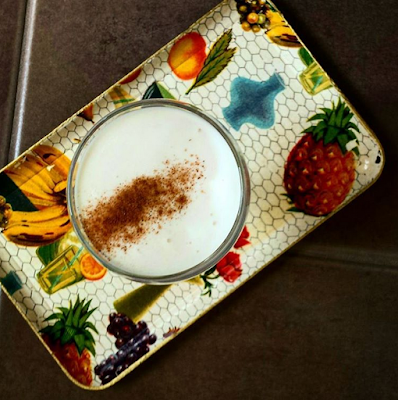 |
| "Oh great - meat in a pancake". |
No matter how plump and tender it was the day before, a night in the fridge turns any cut into the sort of sad-looking specimen that Gordon Ramsey would shudder over on Kitchen Nightmares. Even pulled beef, cooked to melting perfection, looks like a dehydrated porcupine the day after.
It was with no small amount of excitement, then, that I bit into one of these pulled beef pikelets and discovered that some type of dark magic had rehydrated the beef to dizzyingly moist new heights. The effect was so beguiling that my wife, who had greeted dinner with a resigned "Oh great - meat in a pancake", began to tuck in with her usual gusto.
It makes me feel a bit strange to say this about a recipe from 1889, but let me swap my historian hat for my mum hat and say that these pikelets would be great in lunchboxes. They're healthy, quick to make, and could be frozen (just not reheated as the meat has already been cooked twice). They also passed the toddler taste test, unlike the Kale raab I served them with. My tiny food critic threw that to the dog.
 |
| Pikelets in my hand-me-down cast iron frying pan. |
Here is the original recipe:
BEEF FRITTERS.
Beef fritters are best for breakfast; chop pieces of steak or
cold roast beef very fine. Make a batter of milk, flour and an egg, and mix the
meat with it. Put a lump of butter into a saucepan, let it melt, then drop the
batter into it from a large spoon. Fry until brown; season with pepper and salt
and a little parsley.THE LADIES' PAGE. RECIPES. (1889, March 9). Western Mail (Perth, WA : 1885 - 1954), p. 16. Retrieved September 29, 2015, from http://nla.gov.au/nla.news-article32717255
Note: The original recipe does not include any instructions or quantities for making the batter, as it assumes that the cook would have her or his preferred recipe memorised. This really shows the difference in assumed knowledge for recipe readers in the Colonial era. When writing for the modern home cook, food writers are advised to assume little prior knowledge and explain terms including ‘blanche’ and ‘sauté’. The batter recipe included below is my go-to recipe, which I first learnt as a small child and as a result can be found in The Family Circle Cookery Collection: Kids’ Cookbook (1991).
 |
| The batter. I'll admit at this stage I had my doubts. Little did I know the deliciousness that awaited me. |
Pulled Beef Pikelets
Serves four for a main meal with a vegetable side, or six as a snack. These would also make a healthy addition to lunchboxes.
130g (1 cup) plain flour
1 egg
340ml (1 ¼ cup) milk
150g pulled beef (I use this recipe); or cold roast beef, chopped very fine
1 T of chopped parsley
A pinch of salt and pepper
Butter, for frying
30 minutes.
Whisk the flour, egg and milk together to make thick batter. Keep whisking until there are no lumps, to avoid the startling sensation of discovering a pocket of uncooked flour in your pikelet.
Add the beef, parsley, salt and pepper. Stir well with a spoon to combine. (Abandon the whisk at this point. There are few kitchen experiences more unpleasant than trying to remove pieces of batter-covered meat from the interior of a balloon whisk.)
Heat a heavy based frying pan on medium high. While it is heating, set yourself up for pikelet production. As my grandmother would say "Prior Preparation Prevents Poor Performance". Put the bowl of batter next to the stove, with a soup spoon or 1/4 cup measure to ladle the batter into the pan. Put an oven-safe plate in your oven at 100C or "Keep Warm" (if your oven has that setting). You will transfer the pikelets to the plate once they're cooked to keep them warm before serving. Make sure you have an egg flipper on hand to flip the pikelets. Finally, have your butter and a knife nearby.
Cut off a piece of butter as big as a grape, and put it in the frying pan. Holding the frying-pan by the handle, swirl the butter around as it melts so that it coats the pan. Measure three spoonfuls of mixture into your pan (if it is medium-sized). You do not want to overcrowd the pan, or your will develop a pikelet traffic jam when you try to flip them. Use the spoon to spread the batter a bit so that the pikelets have an even thickness.
Cook for about a minute, until you can see a few bubbles on the surface, and a darker colour around the edge. Flip the pikelets over and cook for a further 30 seconds. If they're not golden brown when you flip them, turn your stove up a bit.Transfer the pikelets to the plate in the oven.
Put another grape-sized piece of butter in the frying pan, and repeat the above steps until you've run out of batter.
We enjoyed our pikelets with some good old-fashioned HP sauce.
 |
| Dinner, with the unwanted Kale raab just visible at the top of the image. |































